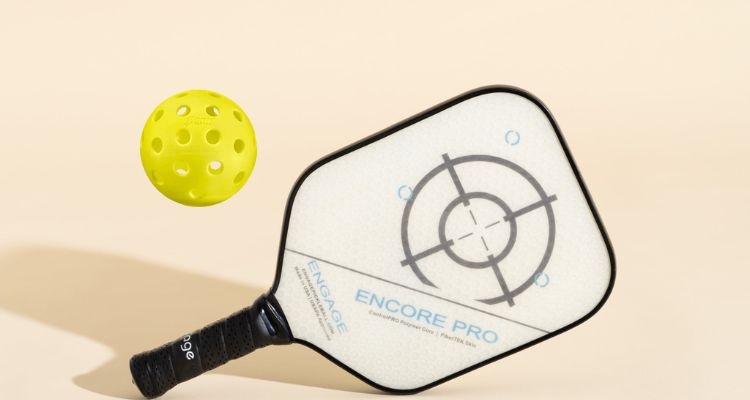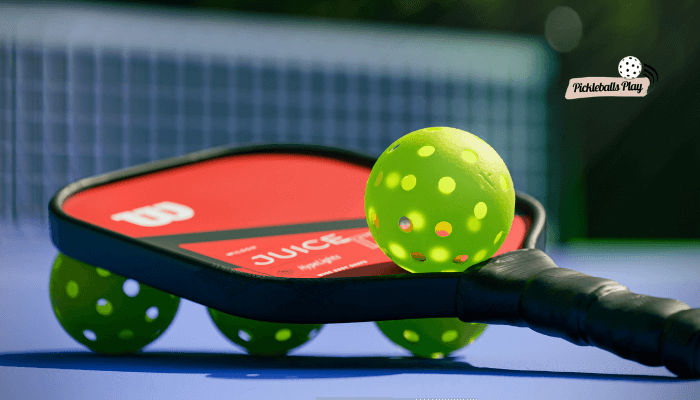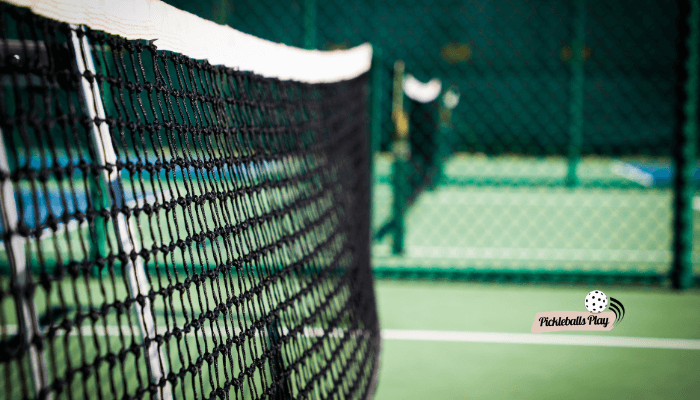Pickleball scoring can seem tricky at first, but once you understand the rules for singles and doubles, it becomes straightforward. Whether you’re a beginner or a seasoned player, knowing the latest pickleball scoring rules for singles and doubles is essential for fair and competitive play.

Understanding Pickleball Scoring Basics
Pickleball uses a unique rally scoring system for some formats, but traditional scoring remains the most common in recreational and competitive play. The United States Pickleball Association (USAPA), now known as USA Pickleball, sets the official rules, which we’ll reference throughout. Here’s a quick overview before diving into specifics:
- Points: Points are scored only by the serving team (in traditional scoring).
- Winning Score: Games are typically played to 11 points, but you must win by at least 2 points.
- Serving Sequence: The serving team or player dictates how points and rotations occur.
Let’s explore the detailed pickleball scoring rules for singles and doubles, highlighting key differences and providing clarity.
Scoring Rules for Singles Pickleball
Singles pickleball is a one-on-one game, requiring stamina and strategy. The scoring rules are simpler than doubles because there’s no partner rotation to manage. Here’s how it works:
Key Scoring Rules for Singles
- Starting Score: The game begins at 0-0. The server starts on the right side of the court.
- Serving and Scoring:
- Only the server can score a point. If the server wins a rally, they earn 1 point and switch sides (right to left or vice versa).
- If the server loses the rally, no point is awarded, and the opponent becomes the server (a “side-out”).
- Serve Position: The server’s score determines their side:
- Even score (0, 2, 4, etc.): Serve from the right side.
- Odd score (1, 3, 5, etc.): Serve from the left side.
- Game Point: The first player to reach 11 points, with a 2-point lead, wins. If the score is tied at 10-10, play continues until one player leads by 2.
Example of Singles Scoring
| Server’s Score | Opponent’s Score | Server’s Side | Outcome of Rally |
|---|---|---|---|
| 0-0 | 0 | Right | Server wins, score becomes 1-0, switches to left side |
| 1-0 | 0 | Left | Server loses, side-out, opponent serves from right |
| 0-1 | 1 | Right | Opponent wins, score becomes 0-2, switches to left |
This pattern continues, with the server always switching sides after scoring and serving from the side corresponding to their score.
Tips for Singles Scoring
- Track Your Score: Always call out your score before serving to avoid confusion.
- Stay Strategic: Since you cover the entire court, use your serve to set up advantageous rallies.
- Practice Side Switches: Get comfortable moving between sides to maintain flow.

Scoring Rules for Doubles Pickleball
Doubles pickleball involves two players per team, adding complexity due to partner rotations and serving sequences. The scoring system ensures both players on a team serve before the opposing team gets a chance.
Key Scoring Rules for Doubles
- Starting Score: The game begins at 0-0-2. The “2” indicates the second server, ensuring both teams follow the same serving sequence.
- Serving and Scoring:
- Only the serving team can score points.
- The server starts on the right side and serves diagonally to the opponent’s court.
- If the serving team wins a rally, they score 1 point, and the server switches sides with their partner (right to left or vice versa).
- If the serving team loses a rally, no point is scored. The serve passes to the second player on the same team (first server becomes second server).
- If the second server loses a rally, it’s a side-out, and the opposing team begins serving.
- Score Announcement: The score is called as three numbers: [Serving Team’s Score] – [Receiving Team’s Score] – [Server Number (1 or 2)]. For example, 5-3-1 means the serving team has 5 points, the receiving team has 3, and the first server is serving.
- Initial Serve Exception: At the start of the game, only one player from the first serving team gets to serve (0-0-2). If they lose the rally, it’s a side-out, and the opposing team starts with both players serving.
- Game Point: Like singles, the game is won at 11 points with a 2-point lead.
Doubles Scoring Example
| Serving Team Score | Receiving Team Score | Server Number | Server’s Side | Outcome of Rally |
|---|---|---|---|---|
| 0-0-2 | 0 | Second Server | Right | Serving team wins, score becomes 1-0-2, server switches to left |
| 1-0-2 | 0 | Second Server | Left | Serving team loses, side-out, opponent’s first server starts at 0-1-1 |
| 0-1-1 | 1 | First Server | Right | Serving team wins, score becomes 1-1-1, server switches to left |
Server Identification
To avoid confusion in doubles:
- Wristbands: In tournaments, the starting first server wears a wristband to clarify who serves first.
- Position-Based Serving: The player on the right side always serves first when their team’s score is even, and the player on the left serves first when the score is odd.
Tips for Doubles Scoring
- Communicate Clearly: Always call the full score (e.g., 4-2-1) before serving to keep both teams aligned.
- Master Rotations: Practice switching sides with your partner to maintain rhythm.
- Track Server Number: Knowing whether you’re the first or second server helps avoid errors.

Rally Scoring vs. Traditional Scoring
While traditional scoring (points only on serve) is standard, some tournaments and recreational games use rally scoring, where every rally results in a point, regardless of who serves. Here’s a comparison:
| Aspect | Traditional Scoring | Rally Scoring |
|---|---|---|
| Point Scoring | Only serving team scores | Any team can score |
| Game Length | Typically to 11, win by 2 | Often to 15 or 21, win by 2 |
| Pace | Slower, strategic | Faster, more aggressive |
| Use Case | Standard in most play | Common in some pro tournaments |
As of 2025, USA Pickleball allows rally scoring in specific events, but traditional scoring remains dominant. Always confirm the scoring format before a match.
Common Scoring Mistakes and How to Avoid Them
Scoring errors can disrupt a game. Here are frequent mistakes and solutions:
- Forgetting Server Number (Doubles): Always announce the full score, including the server number (1 or 2).
- Incorrect Side (Singles): Remember that your score (even or odd) determines your serving side.
- Misunderstanding Side-Out: A side-out occurs only after both servers in doubles (or the single server in singles) lose a rally.
- Not Calling Score: Verbally call the score before each serve to keep everyone on the same page.
Pro Tip: In competitive play, use a scorekeeper or app to track points accurately, especially in close matches.
Tournament-Specific Scoring Rules (2025 Updates)
According to the latest USA Pickleball Rulebook (2025), here are key updates for tournaments:
- Timeout Rules: Each team gets two 60-second timeouts per game (11-point games) or three for 21-point games (often rally scoring).
- Tiebreakers: In some pro events, a tiebreaker rally to 7 points may be used instead of playing to a 2-point lead at 10-10.
- Electronic Scoring: Major tournaments now use electronic scoreboards, reducing human error.
Always check with the tournament director for specific scoring variations, as some events may use rally scoring or modified win margins.
FAQs
Can you play pickleball with two people?
Yes, pickleball can be played with two people in a singles match. In singles, each player covers the entire court, and the pickleball scoring rules for singles apply only the server scores, points are earned on winning rallies, and the server switches sides based on their score (even or odd). It’s a great way to enjoy pickleball without needing a partner or additional players.
What’s the difference between singles and doubles scoring?
In singles, there’s one player per side, so scoring involves only two numbers (server’s score and opponent’s score), and the server switches sides after each point scored. In doubles, two players per team mean a third number (server number 1 or 2) is added, and both teammates serve before a side-out. Doubles also involves partner side-switching after each point scored by the serving team.
Can you use rally scoring in singles pickleball?
Yes, rally scoring can be used in singles pickleball, especially in some tournaments or casual games. In rally scoring, every rally awards a point, regardless of who serves, often played to 15 or 21 points. However, traditional scoring (server-only points to 11) is more common, per USA Pickleball rules.
How do you call the score in doubles pickleball?
In doubles, the score is called as three numbers: the serving team’s score, the receiving team’s score, and the server number (1 or 2). For example, “4-2-1” means the serving team has 4 points, the receiving team has 2, and the first server is serving. Always call the score loudly before serving to avoid confusion.
What happens if you call the wrong score?
If a wrong score is called and noticed before the serve, correct it immediately. If the serve occurs and the rally is played, the point stands as played, per USA Pickleball rules. To prevent errors, use a scorekeeper in tournaments or practice clear score-calling in casual games.
Why Understanding Scoring Rules Matters
Mastering pickleball scoring rules for singles and doubles enhances your gameplay and confidence. Whether you’re playing singles with just two people or doubles with a full team, knowing when and how points are scored helps you strategize effectively. For singles, it’s about stamina and side-switching precision. For doubles, it’s about teamwork and seamless rotations.
Conclusion
The pickleball scoring rules for singles and doubles are straightforward once you grasp the serving and scoring flow. Singles focuses on individual side-switching based on your score, while doubles involves partner rotations and server numbers. With the addition of FAQs, including whether you can play pickleball with two people, this guide covers all bases. By understanding these rules, avoiding common mistakes, and staying updated with 2025 tournament changes, you’ll elevate your game. Practice calling scores clearly, strategize your serves, and enjoy the fast-growing sport of pickleball!
For more details, visit the official USA Pickleball Rulebook or join a local club to refine your skills. Now, grab your paddle and hit the court with confidence!



